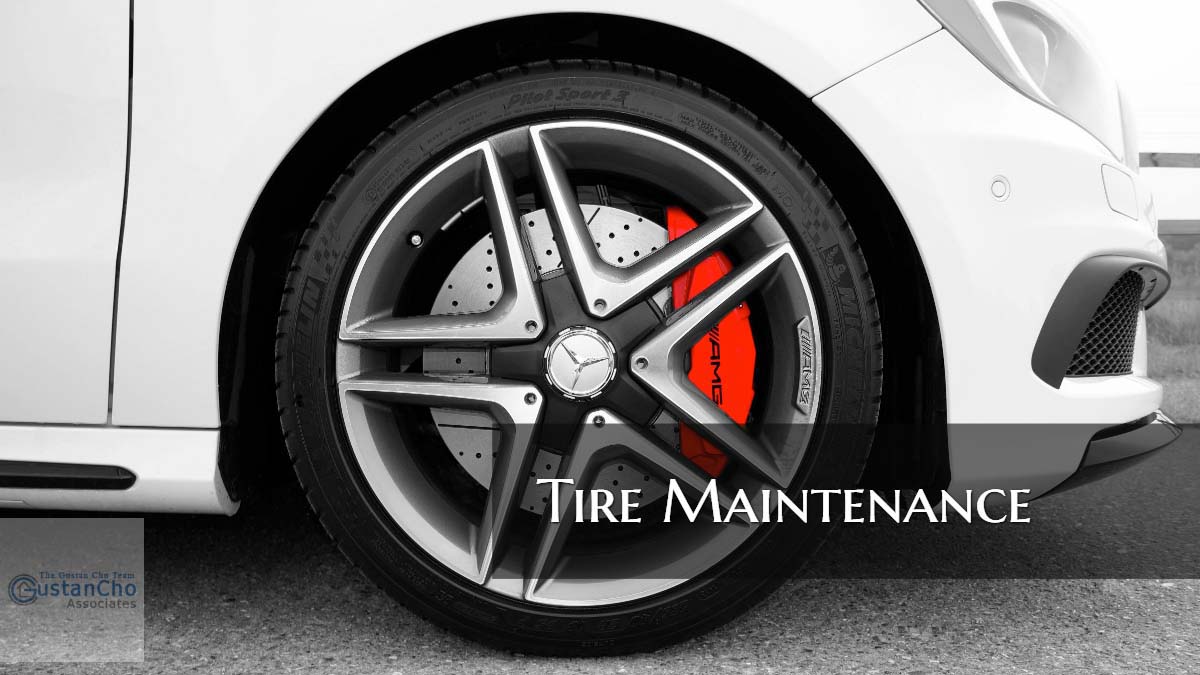This guide covers tire maintenance and safety for car owners. Your vehicles tires are the only part of your vehicle that has direct contact with the road. Tires affect how your vehicle handles, rides, brakes and thus performs. For optimum performance and maximum longevity of your tires, proper tire pressure, balance, alignment and tread depth make all the difference between a safe and tragic outcome. This holds true in a traffic incident especially in wet or slippery road conditions. Dale Elenteny, a senior loan officer and an associate contributing editor of Great Content Authority Forums says the following about tire maintenance:
Checking your tires on a regular basis is an important step in protecting your safety and your automotive investment. Ideally, tire inspection should be performed monthly.
If you drive over potholes and debris in the road or live in a cold climate environment or drive long distances regularly, then you should inspect your tires more frequently. It is especially recommended to inspect your tires before a long trip for such things as nails, leaky valve stems and excessive sidewall cracking.
Here Are Some Tire Maintenance Tips for Drivers to Watch Out For
OVER INFLATION
- Too much air pressure causes mostly the middle of the tire to contact the road.
- This creates wear primarily in the center of the tread and less contact at the tires inside and outside edges resulting in uneven tire wear
UNDER INFLATION
- Too little air pressure causes mostly the tires outer edges to contact the road.
- This primarily wears down the edges and less wear in the center of the tread resulting in uneven tire wear
ERRATIC TREADWEAR
- This is often called “Cupping” and often results from poor tire balance, failed shock absorbers and or other suspension component failure
VIBRATION OR THUMPING
- Vibration or thumping usually indicate an out-of-balance condition on one or more tires or tires that are coming apart and or failing internally
TIRE ROTATION
Front tires and rear tires operate at different loads, for example:
- Front tires (steering and braking) wear differently than rear tires thus rotating your tires every 7500 miles help maintain proper and even tire wear throughout the life of your vehicle tires
Tire Maintenance and Checking Tires
Checking your tires’ tread depth is relatively simple and can be done with a quarter and a penny. Here is how you can do it:
- Insert a quarter into a tread groove with the top of Washington’s head facing down
- If the top of his head is not visible, your tires have at least 4/32” of tread depth and would be considered okay for continued use
- If on the other hand, you can see above the top of Washington’s head then perhaps it’s time to start shopping for new tires
Repeat this step in three different locations of the tire, the outer edge, center, and inner edge to get an overall evaluation of tire wear.
Start Your Process Towards Buying A Home
Apply Online And Get recommendations From Loan Experts
Tire Maintenance: Penny Test
The Penny Test is applied in the exact same way:
- Except, that if you can see the top of Lincoln’s head then your tires have less than 2/32” tread depth which is below legal federal DOT minimum requirement for roadworthiness and confirms it’s time to replace your tires
The difference between 2/32” and 4/32” may not seem like much but based on multiple studies and extensive testing the difference is significant.
- For example, a pickup truck traveling at 70 mph that passes the penny test can take up to 499.5 feet to stop on wet pavement
- However, the same truck traveling at the same speed under the same conditions can stop up to 122 feet shorter if it passes the quarter test
- This is a 24% difference in stopping distance and the equivalent of six or more car lengths
Given these facts, AAA suggests you put that penny back in your piggy bank and instead use a quarter to check tire wear and determine when it is time to replace your tires.
Tire Maintenance and Making Sure that Tires Have Threads
Good tires depend on good tread depth to maintain traction and to shed water on wet and slippery roads:
- Therefore, checking your tires frequently or at least once a month for excessive or uneven wear is a good habit and practice to get into
- Remember, the more rubber you have the better grip you’ll get
Consider These Questions and Answers about Tire Maintenance and Taking Care of Your Vehicle
Tire Maintenance: Why Do We Need to Maintain Our Tires?
- Safety: Proper tire care, such as rotating them on time, ensures the car’s traction, handling, and braking performance work normally.
- Fuel Efficiency: Proper balance inflation in the tire pressure envelope helps cross-minimize drag, saving fuel.
- Longevity: When tires are maintained timeously, it boosts the reliable life of the tire; hence, the need for tire replacement becomes low.
Tire Maintenance: How Often Should I Check the Tire Pressure on My 4WD or SUV?
- For 4WD or SUV: The general rule of thumb states that SUV or 4WD owners should test pressure at least once a month before embarking on a journey involving long hauls.
- Reason: Tire pressure has changed frequently due to temperature variations, which ensures leaks.
Where Can I Find the Recommended Tire Pressure for My Car, and in What Unit Is It Measured?
- Source: To ensure you have the recommended tire pressure for your vehicle, check your owner’s manual.
- It will have the specifications or even a sticker inside the door frame of the driver’s vehicle.
- Units: The unit used to determine tire pressure is Phoenix per square inch.
What Do I Have to Do to Check the Tire Pressure on My Vehicle?
- Tools Needed: A reliable tire pressure gauge.
- Step 1: Unscrew the valve cap.
- Step 2: Place the gauge on the valve stem and push it gently until it gets stuck.
- Step 3: Look at the gauge and read the number.
- If the gauge suggests a higher psi, use the gauge to over-adjust until proper levels are met.
- Then, step 4: Secure the valve cap over the stem.
How Often Should I Swap Tires, and Does the Manual for My Vehicle Have Recommendations for This?
- Frequency: Yes, it does. It states that tires should be swapped every 5,000 to 7,500 miles, and if not, there is no harm in ensuring it is done.
- Purpose: Rotation facilitates increased performance and prolongs tire life by ensuring even tread wear.
How Do I Know When to Change My Tires?
- Tread Depth: Using a depth gauge or the ‘penny test’ in which Abraham Lincoln’s head is inserted upside down into the tire tread is done where Lincoln’s head is close to being obscured, then the tires have to be changed.
- Wear Indicators: The tread should have certain built-in wear bars.
- If not, the tires must be replaced as the wear indicators finally become even, with the tread surface wearing out.
- Cracks or Bulges: Side wall damage is easy to see and requires the installation of new ones.
How Long Do Tires Typically Last?
- Lifespan: Allowing for use, maintenance, and driving conditions, the general time exceeds six to 10 years.
- Inspection: Besides the tread depth, check for other signs of aging.
What Causes Uneven Tire Wear?
- Causes:Failure in Wheels misalignment.
- Improper Inflation (Tire over or underinflation).
- Worn out suspension elements.
- Driving practices like hard braking and cornering frequently.
- Solution: Regularly inspecting your vehicle, checking wheels, and balancing tires to align the rotatory objects are done every too often.
How Do I Deal with a Tire That Has Blown Out?
Tire Maintenance: Steps to Follow:
- Being tense and holding on to the steering wheel is recommended.
- Do not hit the brakes.
- Instead, slowly and steadily decrease speed.
- Slide the vehicle to the roadside.
- Put the hazard lights on, get out of the car, and then check the car for a flat tire or get a spare.
Should I Get Winter Tires or Settle for All-Season?
Tire Maintenance: Winter Tires:
- Suitable for heavy snow, icy, or extreme cold.
- They’re made using a soft rubber composition, which grips better in cold climates.
Tire Maintenance: All-Season Tires:
- It can be used in an environment with moderate fluctuations in temperature.
- They give performance and durability at the same time.
How Do I Maximize the Life of My Tire/Wheel?
Tire Maintenance Suggestions:
- Always have the right amount of tire pressure.
- Don’t overload the vehicle.
- Tires rotate and align them now and then.
- Avoid driving intended to speed up hard braking or driving really fast, as this causes tire tears.
Under What Circumstances Can I Change All Four Tires Together?
- Best Case: All four tires are replaced together, enabling equal performance out of the vehicle.
- However, if only one or two tires are worn out, replace them with tires of the same brand, size, and tread pattern as the old ones.
Why Is Wheel Balancing and Alignment Important?
Wheel Alignment ensures that the angle at which the tire touches the road surface is correct, lessening the strain on the tire and improving the vehicle’s control.
Tire Maintenance: Wheel Balancing
Equal weight is placed on the tire or wheel assembly so there is no vibration.
What is The Ideal Temperature Range for My Tires?
- Cold Weather: What air needs, it loses; cold weather compresses air, leading to a loss of pressure in tires.
- Check and adjust the PSI during winter.
- Hot Weather: When trying to fill the tires, over infusion may occur because the air gets too hot and expands.
- Avoid getting tires over-infused in winter.
What Are the Necessary Items to Include in an Emergency Tire Kit?
Tire Maintenance: Key Materials:
- A spare tire or a tire repair kit.
- A jack and lug nut wrench.
- A tire air pressure meter.
- A portable air pump.
- A reflective warning triangle or flares.
Proper, timely, and appropriate tire maintenance is important for safety, effectiveness, and cost efficiency. In that sense, ensuring speed with these maintenance tips and fixing such a problem is absolutely indispensable to maintaining a smoother and safer drive.
About The Author of Tire Maintenance and Safety
Alex Carlucci is a senior loan officer and contributing associate editor and writer for Gustan Cho Associates Mortgage Resource Center.Alex is a producing licensed mortgage loan originator with Gustan Cho Associates. Alex was in the automotive business for over 30 years and has extensive experience in all aspects of the automotive industry, from styling and designing to mechanics and technology.
Alex is also a real estate investor and due to his expertise in real estate and lending. He became a licensed mortgage banker so he can help others in realizing their dream of homeownership a reality.
Alex is based in Oakbrook Terrace, Illinois and represents a national mortgage banking firm that has its reputation of originating and funding FHA, VA, USDA, and Conventional Loans with no lender overlays. We are looking forward to more informational blogs by Alex in the coming days and weeks.
This BLOG on Tire Maintenance Was UPDATED on December 27th, 2024.
Start Your Process Towards Buying A Home
Apply Online And Get recommendations From Loan Experts








